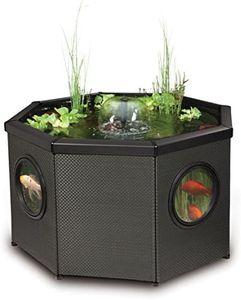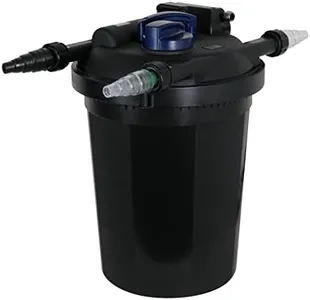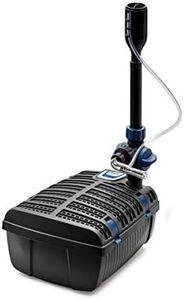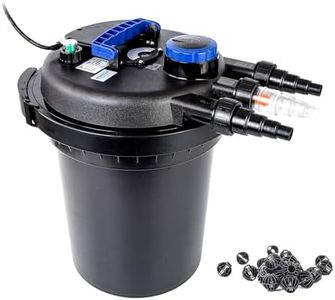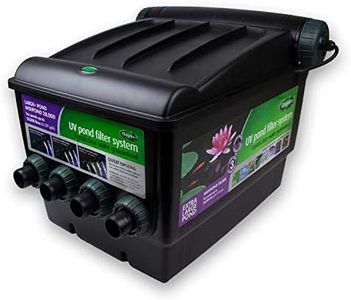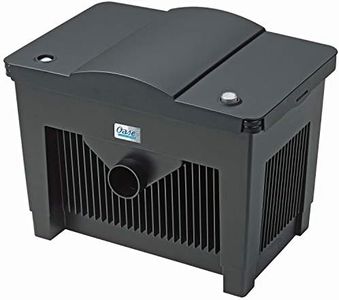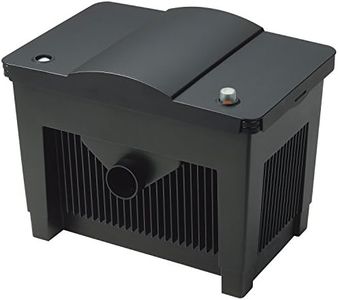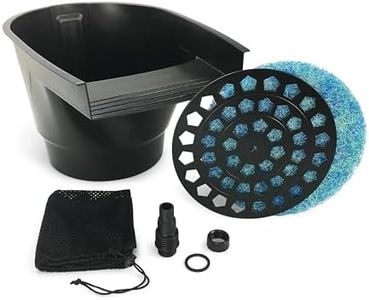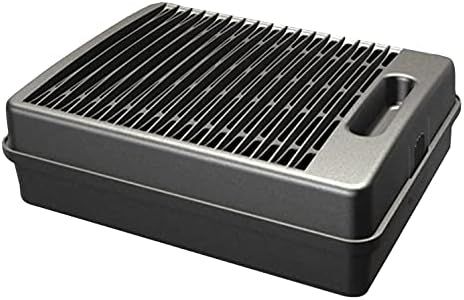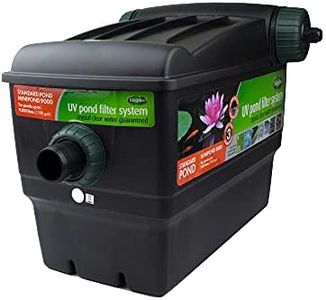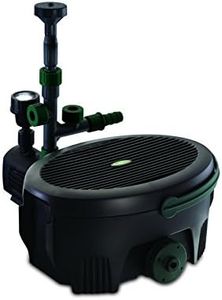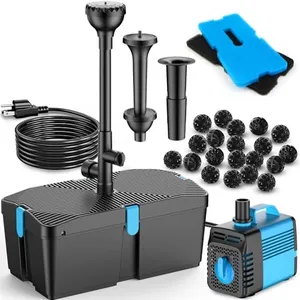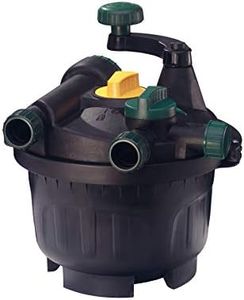We Use CookiesWe use cookies to enhance the security, performance,
functionality and for analytical and promotional activities. By continuing to browse this site you
are agreeing to our privacy policy
10 Best Koi Pond Filters
From leading brands and best sellers available on the web.Buying Guide for the Best Koi Pond Filters
Choosing the right koi pond filter is essential for maintaining clean, healthy water and supporting the well-being of your fish. Pond filters help remove debris, toxins, and waste, keeping your pond clear and your koi happy. When getting a filter, consider the size of your pond, the number of fish, and how much time you're willing to spend on maintenance. Understanding the key features of pond filters can make the selection process much easier and help ensure the filter you choose is a perfect match for your setup.Filter TypeKoi pond filters come in several types: biological, mechanical, and UV clarifiers, sometimes combined in one system. Mechanical filters physically trap debris, biological filters use beneficial bacteria to break down toxins, and UV clarifiers reduce algae growth. If your pond often gets green or murky, a UV clarifier might be a must. For general maintenance, a combination of mechanical and biological filtration usually works best. Consider your pond's main problems—if it's just leaves and debris, mechanical may suffice; for heavy fish loads and waste, include biological filtration.
Flow RateFlow rate is the amount of water the filter can process, measured in gallons per hour (GPH) or liters per hour (LPH). A good rule of thumb is that the filter should be able to circulate the entire volume of your pond once every one to two hours. Smaller ponds need lower flow rates, and larger ponds require higher flow capacities. Choose a flow rate that matches or slightly exceeds your pond's water volume to keep water quality high, especially if you have a lot of fish.
Pond Volume CapacityThe pond volume capacity is the maximum water volume a filter can handle, often listed in gallons or liters. Filters that are too small might struggle to keep a pond clean, especially with many koi. It's better to choose a filter rated for a slightly larger pond than yours, particularly if you have more fish or feed often, as more waste will need more filtration.
Ease of MaintenanceFilters need cleaning to work efficiently, and some are easier to maintain than others. Consider features like easy-access lids, backwash systems, or self-cleaning capabilities. If you prefer spending less time cleaning and more time enjoying your pond, look for filters known for simple, quick maintenance. If you don't mind a bit more work to save on costs, manual-clean types may suffice.
Installation TypeSome pond filters are designed to be submersible (placed in the pond), while others are external (located outside the pond). Submersible filters are easier to install in small ponds and are less visible, while external filters generally handle larger ponds and are easier to maintain. Your pond layout, size, and personal preference for visibility and maintenance should guide your choice.
Media TypeFilter media refers to the material inside the filter that traps debris or hosts beneficial bacteria. Common types include sponges, bio-balls, and ceramic rings. More layers or types of media generally mean better filtration but can be bulkier. If water clarity and fish health are top priorities, choose filters with multiple or high-quality media options. Think about how easy it is to clean or replace the media as well.
